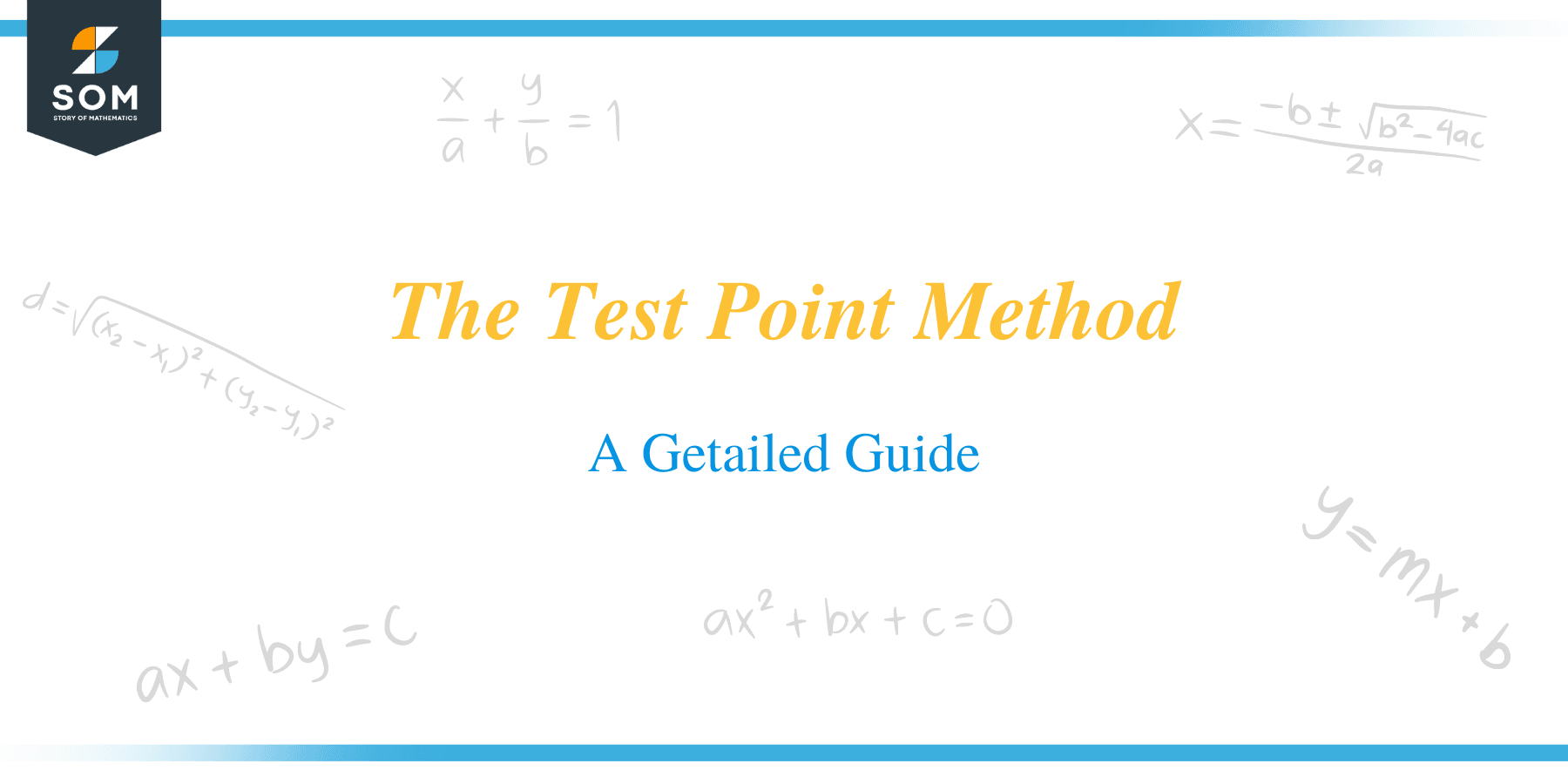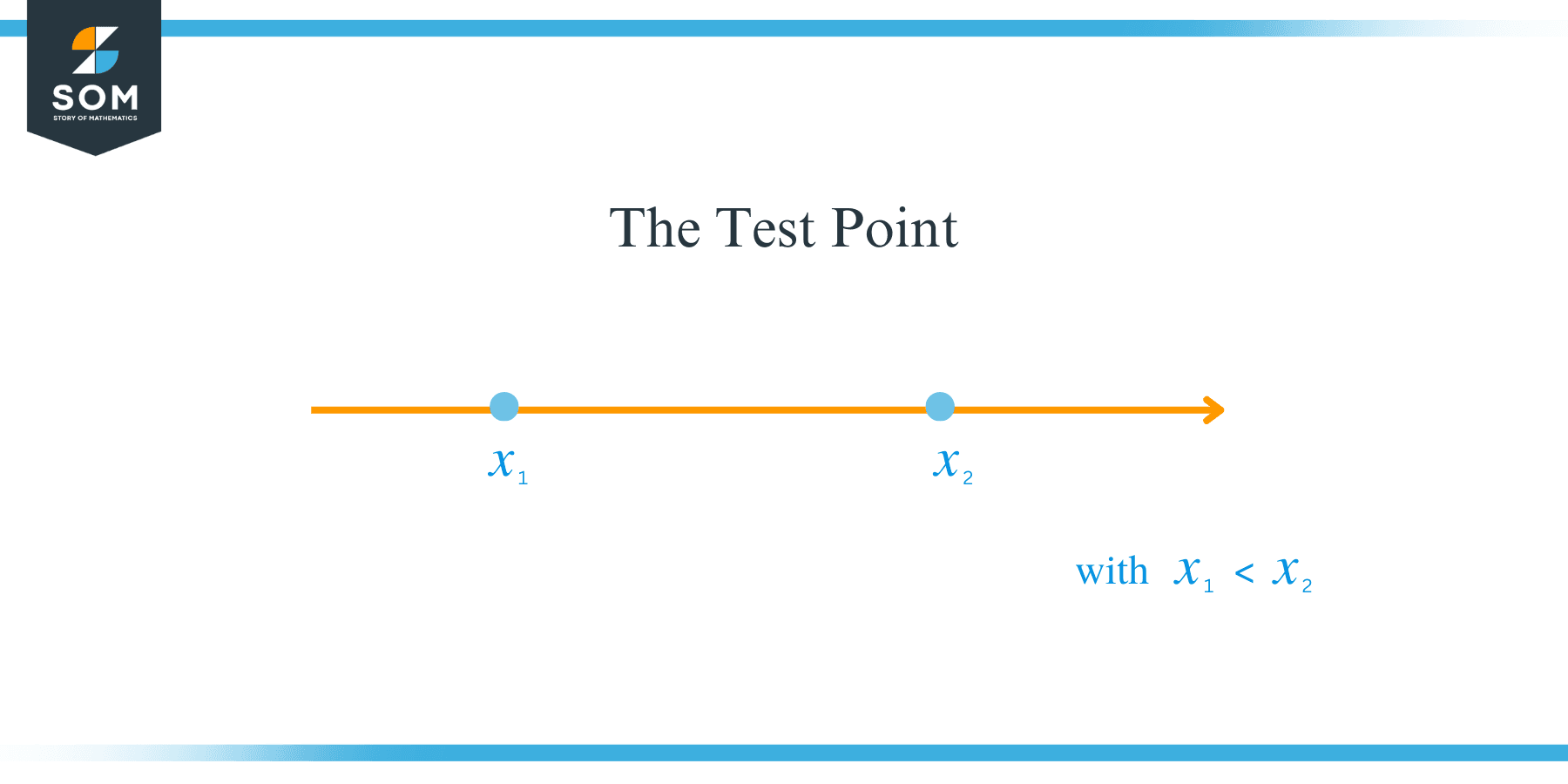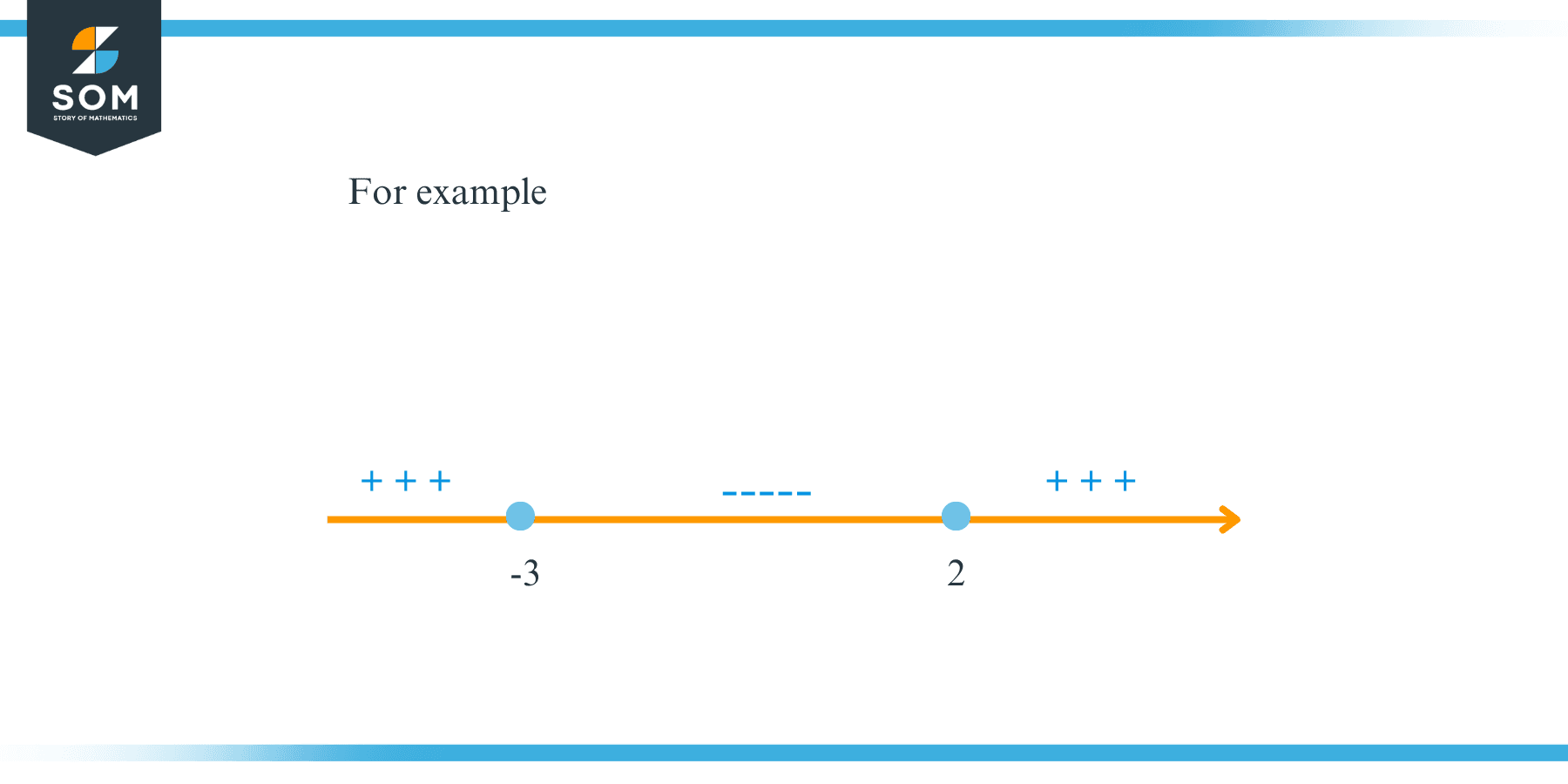JUMP TO TOPIC
 Using the test point method, you can determine significant intervals and thereafter test a number out of each interval. This method simplifies the solution of linear, quadratic, and rational inequalities. In this complete guide, you will learn about the test point method and its applications as well as linear, quadratic, and rational inequalities.
Using the test point method, you can determine significant intervals and thereafter test a number out of each interval. This method simplifies the solution of linear, quadratic, and rational inequalities. In this complete guide, you will learn about the test point method and its applications as well as linear, quadratic, and rational inequalities.
How To Apply Test Point Method
The key to using a test point method is to draw a number line and mark the zeros, breaks, and intervals where the function’s sign changes. This will make it simpler to proceed with the solution and you can identify the intervals in no time.
Consider a quadratic inequality as an example and proceed step by step to gain a better understanding of the test point method.
Example 1
To use the test point method to solve the inequality $x^2+x>6$, get zero on one side and define the function $f$ as: $f(x):=x^2+x-6>0$. The direction of the inequality symbol is never changed by subtracting or adding the same expression on both sides. Also, the symbol $:=$ stands for “equal by definition.”
As a next step, find the zeroes of $f(x)$ and the breaks in the graph of $f(x)$. In this example, there are no breaks in the graph. Therefore, the zeroes can be found as follows:
$x^2+x-6=0$
$(x-2)(x+3)=0$, so the zeroes are $x=2$ and $x=-3$.
Now, test the resulting sub-intervals. Take some test points in the intervals between the zeroes to find out the sign of $f$. Let $t$ be the test point, take for example $t=-5$ (which will be in $x<-3$) the resulting sign of $f$ will be positive. Next, take $t=-2$ in $-3<x<2$ the resulting sign of $f$ will be negative. Finally, take $t=3$ in the interval $x>2$, and the sign of $f$ will be positive. Recall that the sign of $f$ on each sub-interval is all that matters and not the exact value, so don’t tackle more than you need to!
Write the solution set, which in this case will be $(-\infty,-3)\cup(2,\infty)$ or $x<-3$ or $x>2$. For finding the solution set, interval representation is helpful. The parentheses $(,)$ are utilized to demonstrate an open interval or that the interval’s endpoints are excluded. Similarly, $[,]$ is used to indicate a closed interval, or that the endpoints of the interval are included. In addition, the union symbol $\cup$ is used to combine two sets. In other words, it represents the union of two sets.
The final step in this technique is optional. Regard this step as a spot check and substitute some values in the original equation. Pick a few simple values from or out of your solution set. Substitute these values in the original equation to check whether the values satisfy the inequality or not.
Your inequality must be true if the solution set contains that number. When a number is missing from the solution set, your inequality must be false. This spot check can provide you with confidence in your work while also catching errors. Make sure to use the given inequality for this check when you choose to catch any errors you may have made while solving the inequality.
The preceding example is a simple case in which the graph of the given quadratic equation contains no breaks. Let’s learn about rational inequalities first, and then have a look at another example with both breaks and zeroes to see how the test point method works for rational inequalities.
Rational Inequalities
A rational inequality is a type of mathematical inequality expression that incorporates a ratio of two polynomials, which is also known as a rational expression, on the left side of the inequality and a zero on the right.
Inequalities such as $\dfrac{1}{x}-1>0,$ $\dfrac{2-x}{x}-3<0,$ etc, are rational inequalities since they incorporates a rational expression.
Solving a Rational Inequality
While solving a rational inequality, you can make use of the techniques required for the solution of the linear inequalities. This makes it easier to simplify such types of inequalities. You must keep in mind that when you multiply or divide by a negative number, the inequality sign must be reversed. To solve a rational inequality, you should first re-write it with one quotient on the left and zero on the right.
The critical points or breaks that will be used to divide the number line into intervals are then determined. A critical point, also known as a break, is a number that causes the rational expression to be zero or undefined.
You can then work out the numerator and denominator factors and obtain the quotient in every interval. This will determine the interval or intervals containing all of the rational inequality solutions. You can write the solution in interval notation, paying close attention to whether or not the endpoints are included.
Another distinction that you should carefully take into account is that which values may render the rational expression undefined and thus must be avoided. All of this is easily accomplished with the test point method.
Example 2
Consider the second example $x\geq \dfrac{3}{x-2}$. This function has both zeroes and a break. Let’s follow some steps to find out the breaks, the zeroes, and the solution set of the given equation:
Step 1
Get zero on one side:
$x-\dfrac{3}{x-2}\geq 0$
Step 2
Regard the function as:
$f(x):= x-\dfrac{3}{x-2}$
Step 3
Find the zeroes of $f(x)$:
$f(x)= x-\dfrac{3}{x-2}$
$f(x)= \dfrac{x(x-2)-3}{x-2}$
$f(x)= \dfrac{x^2-2x-3}{x-2}$
$f(x)= \dfrac{(x+1)(x-3)}{x-2}$
$\dfrac{(x+1)(x-3)}{x-2}=0$ (To find the zeroes)
Hence, the zeroes are: $x=-1$ or $x=3$.
Step 4
Find out the breaks. The break occurs where the denominator becomes zero and the given function becomes undefined. In this example, the break occurs at $x=2$.
Step 5
Test the resulting sub-intervals to check the sign of $f(x)$ as done in example 1 before.
Step 6
Report the solution set as:
$[-1,2)\cup [3,\infty)$ or $-1\leq x<2$ or $x\geq 3$
What Is an Inequality?
In mathematics, inequality denotes a mathematical equation in which neither side is equal. Inequality occurs when there if the relation between two equations of numbers is established on a non-equal comparison.
The equal sign $(=)$ in the equation is then replaced by one of the inequality symbols, for example, less than symbol $(<)$, greater than symbol $(>)$, less than or equal to symbol $(\leq)$, greater than or equal to symbol $(\geq)$, or not equal to symbol $(\neq)$.
In mathematics, there are three types of inequalities generally known as rational inequality, absolute value inequality, and polynomial inequality.
Linear Inequalities
Linear inequalities are the equations that compare any two values using inequality signs such as $<, >, \geq$, or $\leq $. Such values may be algebraic, numerical, or a mixture of the two. You can have the graph of a standard linear function while plotting the graph for inequalities. However, the graph of a linear function is a line, whereas the graph of inequality is the portion of the coordinate plane which satisfies the inequality.
A line that divides the graph of a linear inequality into parts is generally referred to as a borderline. This line is usually associated with the function. A portion of the borderline incorporates all the solutions to that inequality. The dashed borderline is used to represent the inequalities such as $>$ and $<$, whereas you can use a solid line to represent $\geq$ and $\leq$.
Solving Linear Inequalities
Linear inequalities, such as $x-1\geq 2-7x$, can be worked out by employing some of the commonly known techniques to obtain all the terms on one side of the inequality. The only difference between dealing with inequality and with equations is that when you divide or multiply an inequality with a negative number, you should change the direction of the inequality symbol.
Quadratic Inequalities
A quadratic inequality is just an equation that lacks an equal sign and contains the highest degree of two. It is a mathematical expression that indicates whether one quadratic equation is greater than or less than the other. It is similar to solving quadratic equations.
We simply need to remember a few points and techniques when tackling more difficult inequalities. The solution to a quadratic inequality is usually a real number that, when substituted for the variable, produces a true statement.
Solving Quadratic Inequalities
In nonlinear inequalities such as $x^2-1\leq 3$, the variable appears in a more challenging way. They necessitate more modern methods, which is where the test point method is utilized. The test point method is also applicable to linear inequalities.
Important Concepts for Solving Nonlinear Inequalities
Every inequality could be represented with a zero on the right side. The inequality symbol determines the solution sets where the solution sets contain the values of $x$ which satisfies the equation. There are two points on the graph of a function, say $f$, where this function can move from upwards to downwards the $x$-axis or vice versa. More precisely, the graph of the function $f$ changes the sign from positive to negative or vice-versa at only two places on its graph.
These are the points where $f(x)=0$, where the graph crosses the $x-$axis, and where the graph breaks. These special locations will be referred to as sign change candidates. So, when you need to know whether a graph is below or above the $x$-axis, simply look for all the candidates for sign changes since these are the locations where it could start changing from upwards to downwards.
Between each one of these points, you will understand that the graph is either above $(f(x)>0)$ or below $(f(x<)0)$. Moreover, to have a graph that is sometimes above and sometimes below the $x-$axis, another zero or a break is required.
Conclusion
We’ve covered a lot more information about applying the test point method to inequalities, so to gain a better understanding of the concept, let us summarize our guide:
- The test point method is useful in solving the quadratic and rational inequalities.
- Linear inequalities are the comparisons of two values by the inequality symbol, while Quadratic inequality refers to the equation having the inequality symbols rather than an equality symbol.
- Every inequality can be written in a form with zero on the right-hand side.
- Linear inequalities require many simple techniques for their solutions as compared to the quadratic ones, while Rational inequalities are the ones with the ratio of polynomials along with a zero at either side of the inequality symbol.
- There are two types of places where a function changes its sign, these are called zeros and critical points or breaks. The break occurs when the denominator becomes zero.
The test point method provides ease in solving the quadratic as well as rational inequalities, which is why this method is of great importance in mathematics. Why not take some more complicated examples of quadratic and rational inequalities to have a good command and better understanding of the test point method? This will result in polishing your skill in solving and graphing the equations as well.
